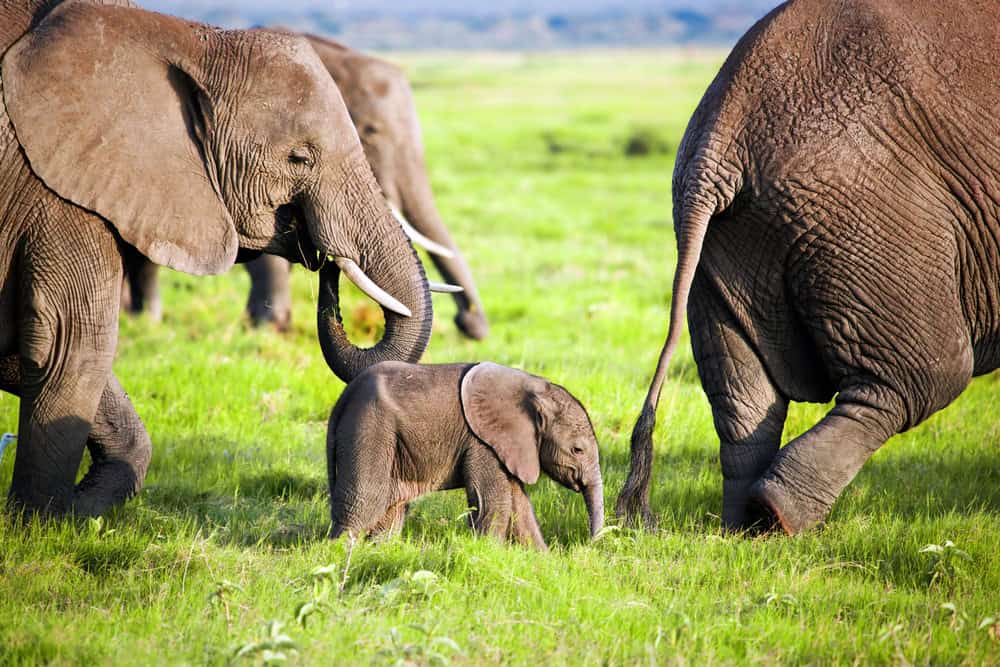Elephants have long captured the imagination of humans, embodying both majesty and vulnerability in a rapidly changing world. Once roaming vast stretches of Africa and Asia in considerable numbers, they are now confronted with complex survival challenges. As we grapple with a world that is more connected than ever before, the fate of the elephant population is shaped by factors that are far from simple. This article takes a look at where elephant populations stand today and the factors affecting their existence. What does the future hold for the world’s largest land mammal?
Elephant Populations by the Numbers

In Africa and Asia, elephants are divided into two distinct species—Loxodonta africana, the African bush elephant, and Elephas maximus, the Asian elephant. As of 2023, the African elephant population hovers around 415,000, down from several million at the start of the 20th century. Asian elephants face an even more precarious future, with a population of approximately 40,000 to 50,000 individuals. While conservation efforts have led to some stabilization in specific regions, particularly southern Africa, these numbers represent a sobering reality. In parts of Asia, elephant populations are isolated, fragmented, and dwindling at a faster rate. The shrinking habitats and human-wildlife conflict make survival all the more difficult for these gentle giants.
The Elephants’ Shrinking Home

The expanding human footprint across Africa and Asia has led to significant habitat loss for elephants. Forests, savannahs, and jungles—the ecosystems where elephants thrive—are increasingly encroached upon by agriculture, infrastructure development, and urban sprawl. Habitat fragmentation not only limits their range but also restricts their natural behaviors. Elephants, known for their migratory patterns, often find themselves trapped between newly erected fences and highways. What was once an unimpeded journey for food and water now becomes a dangerous venture through farmland, putting both elephants and human lives at risk. This creates a cycle of conflict that ends in casualties on both sides.
Poaching: A Crisis That Persists

Despite international bans and increased enforcement, poaching remains one of the most significant threats to elephant populations. For African elephants, particularly those in Central and East Africa, poaching is driven by the illegal ivory trade, which continues to be a lucrative market. It’s estimated that between 20,000 and 30,000 elephants are killed each year for their tusks, mostly driven by demand in Asia. The poaching of Asian elephants, although less common, persists for different reasons. In some regions, they are hunted for their skin or captured for the tourist trade. The pressures from these activities add further strain to an already vulnerable population. While poaching has decreased in some regions thanks to stronger protections and enforcement, it remains a powerful force that can undo decades of conservation work.
Conservation Efforts

In the face of adversity, global and local conservation efforts have emerged as crucial lifelines for elephant populations. Protected areas such as national parks and wildlife reserves across Africa and Asia provide relatively safe spaces for elephants to roam and reproduce. Conservation organizations, often in collaboration with local governments, work tirelessly to monitor populations, curb poaching, and ensure that habitats remain intact. One bright spot has been the revival of elephant populations in countries like Botswana, which boasts one of the largest elephant populations in the world. Some areas in India and Sri Lanka have also seen minor increases in their Asian elephant populations, thanks to local community involvement and stricter anti-poaching measures. However, the success of these programs is often fragile and relies heavily on political will, funding, and the ongoing fight against poaching and habitat destruction.
Will Elephants Survive the Next Century?

The future of elephants is at a crossroads. While many regions have made progress in conservation, others continue to grapple with challenges that are difficult to overcome. Climate change looms as a new threat, altering ecosystems in ways that are hard to predict. Droughts and changes in food availability could further limit elephants’ survival, especially in already strained environments. Moreover, as human populations expand, finding a balance between conservation and development will become even more crucial. Can elephants and humans coexist in a world that is increasingly pressing up against the borders of nature? It’s a question that needs answering. For now, the survival of elephants rests in the hands of those willing to fight for them—whether through conservation, legislation, or simply through education and awareness. These giants of the animal kingdom have walked this earth for millions of years; the hope is that they will continue to do so for many more.
- The Impact of Wildfires on Wildlife - August 25, 2025
- Watch 100,000 Live Salmon Escape After Truck Crashes in Oregon - August 23, 2025
- How To Protect Your Dog in the Heat - August 23, 2025

